14,576 Original artworks, Limited Editions & Prints:
A form of art, primarily painting, that has been influenced by spiritualism is called spiritualist art, spirit art, mediumistic art, or psychic painting. Spiritual art had a significant influence on modernism, and as a result, on art today.
Georgiana Houghton and Piet Mondrian are two well-known spiritual artists. Spiritualism also served as an inspiration for the pioneering abstract art of Vasily Kandinsky, Piet Mondrian, Kasimir Malevich and František Kupka. Houghton and other Spiritualist artists helped historians in recognizing the significance of Spiritualism and the occult milieu.
In recent years many art experts now acknowledge Spiritualism's contribution to the development of modern abstract art. Leading contemporary artists are still interacting with spirituality. Under the instruction of renowned Brazilian medium-healer John of God, Serbian performance artist Marina Abramovic became a medium. Many spiritualist elements as well as those drawn from Afro-American and Aboriginal Australian traditions are present in her work.
Different types of spirit art
Although many artists were influenced by Spiritualism, very few created what Spiritualists refer to as "spirit art." What exactly constitutes "spirit art" can be categorized into three main categories: "precipitated" works of art; portraits of spirits painted by mediums' hands during seances; and creations made by medium-artists who claim that their hands are guided by spirits.
The mediums assert that in the first case of "precipitation," the spirits didn't use a human artist to lead their hands; instead, they created the paintings themselves. In a second example of spirit art, spirit portraits, it was highly popular for mediums to sketch portraits of the spirits they said were present at the seances during the height of Spiritualism. "Auragraphs," which depict a person's history, present, and future as seen by a medium or clairvoyant, are close to the second type of "spirit art."
According to Spiritualists, the third type of "spirit art" consists of works of architecture, sculpture, and painting produced by spirits directing the hands of the artist. In the second group (spirit portraits), spirits are said to frequently direct the medium's hands as well, but in the third category, various works of art are created rather than portraits of the spirits themselves.
“Precipitated” works of art
David Duguid (1832-1907) was the first well-known medium to be able to "precipitate" spirit paintings. Although Duguid frequently painted with the aid of spirit painters, during his seances his guides also created "direct" (precipitated) paintings.
The Campbell brothers, who resided in the Spiritualist community of Lily Dale, New York, were perhaps of the first mediums to specialize in precipitating paintings. Despite not being brothers, Allen Campbell (1833–1919) and Charles Shourds (1863–1926) shared a home and conducted seances together. The Campbell brothers never put their hands on the canvas while creating their most well-known portraits, which include those of Napoleon and Abraham Lincoln, which were completed in public. Even today, tourists and locals of Lily Dale claim to have had spiritual encounters in front of the Campbells' masterworks.
The Bangs Sisters, Elizabeth (1859–1920) and May Mary Elvira (1862-1917), were equally well-known for their precipitated portraits of deceased persons. Although they were frequently exposed as frauds, the Campbell Brothers and the Bangs Sisters were strongly protected by a significant segment of the American Spiritualist community.
The "Swami Laura Horos," also known as Ann Odelia Diss Debar (1849–1911), who claimed to be guided by the spirits of several European old masters, was also associated with spirit paintings. Debar was imprisoned in 1901 after being found guilty of fraud and engaging in immoral sexual behavior in her London temple.
In the beginning of her career, Madame Helena Blavatsky (1831–1891), the most well-known and legendary occultist of the 19th century and the founder of the New Age movement, was also engaged in the precipitating of spirit paintings.
Spirit portraits
Victor Hugo (1802–1855) created his spirit paintings during séances held at his Jersey, Channel Islands, residence. At that time, a thriving Spiritualist market was also supported by people looking for portraits of their deceased loved ones in the United States. There, Wella Percy (1833–1900) and Lizzie Pet Anderson (1839–1896; prominent) were partners in life and spiritualism. They were promoted by Gallery of Spirit Art, a Brooklyn-based publication that only featured artwork created with the assistance of the spirits.
Spirit portraits that appear at seances are still a part of the current Spiritualist scene, and for individuals who think they recognize their deceased loved ones, they may be a very affecting experience. Frank Leah (1886-1972) and Coral Polge (1924-2001), two British spirit artists, were internationally renowned in this area.
Several hundred spirit painters are carrying on the tradition, including Coral Ryder and Ann Bridge Davies in the United Kingdom, Francesca Ferraro in Canada, and Angelique van Bezouwen in the Netherlands.
Art produced by spirits directing the hands of the artist
Brazilian Spiritualists who practice trance painting frequently channel the works of well-known painters and sculptors. José Medrado (b. 1961) is well renowned throughout the world for his trance acrylic paintings and for how simple it is for him to produce a piece of art with the aid of many spirit assistants. In trance state he has created paintings under the influence of painting masters such as Renoir, Vincent Van Gogh, Claude Monet, Matisse, Gauguin, Cassatt, Da Vinci, Morisot, Manet. Also well known as Medrado in Brazil is Luiz Antônio Gasparetto (1949-2018), who paints and sculpts with his hands guided by Degas, Sandro Botticelli, Amedeo Modigliani, and many other renowned artists.
Some examples of spirit architecture also fall within this category. Through the use of mediums, Iulia Hasdeu (1869–1888), revealed the architectural plans for both her famous "Castle Hasdeu" in Câmpina and her grave in Bucharest. The Italian village of Rosazza, near Biella, constructed between 1880 and 1899 for Italian senator and Freemason Federico Rosazza (1813–1899), is another example of spirit architecture. It was designed by painter Giuseppe Maffei (1821-1901). It was based on plans given to him by the spirits of Augustine of Hippo (354–430), who never worked as an architect in his life, and an unnamed man from Volterra, Tuscany.
Influence of Spiritualism on contemporary art
There has been a resurgence of interest in spirituality in the art industry in recent years. Posthumous attention is being given in the museums to deceased artists who delved extensively into mysticism and religion. The captivating Hilma af Klint exhibition at the Guggenheim Museum in 2018–19, which became the most visited exhibition in the museum's history, is maybe the most well-known example of this. The Whitney Museum of American Art displayed Agnes Pelton's first solo exhibition of her work in more than 20 years in 2020.
The idea of spirituality is becoming more and more significant to numerous cultural discourses in the twenty-first century, including that of contemporary art. A spiritual or religious tradition may be alluded to or represented in art that is considered to be spiritual. In the past, the connection between art and religion has served as a mediator between spirituality and art. However, despite the fall of organized religion in Western Europe, there has been a rise in spirituality-related interest in other spheres of culture, particularly in the arts.
Discover original contemporary Spiritual Art Artworks on ArtMajeur
Contemporary Spiritual Art is a genre of artwork that aims to evoke spiritual feelings and emotions through visual representations. The artwork is created using a variety of supports and materials, such as canvas, paper, wood, and metal. The artists use a range of techniques, including painting, drawing, printmaking, and mixed media. What makes this type of original artwork unique is the way it explores and expresses spiritual themes, such as the search for meaning, the connection between humanity and nature, and the nature of existence itself.
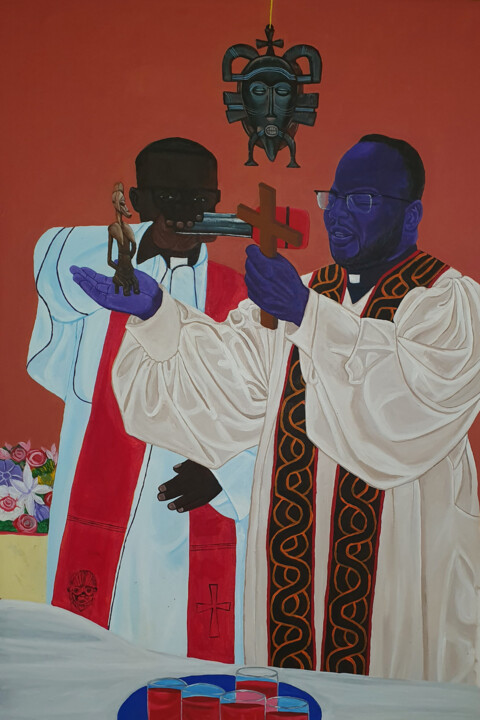
©2025 Awe Haiwe
Origins and History
Spiritual Art originates from the early 20th century and is rooted in the desire to express the spiritual essence of the universe.
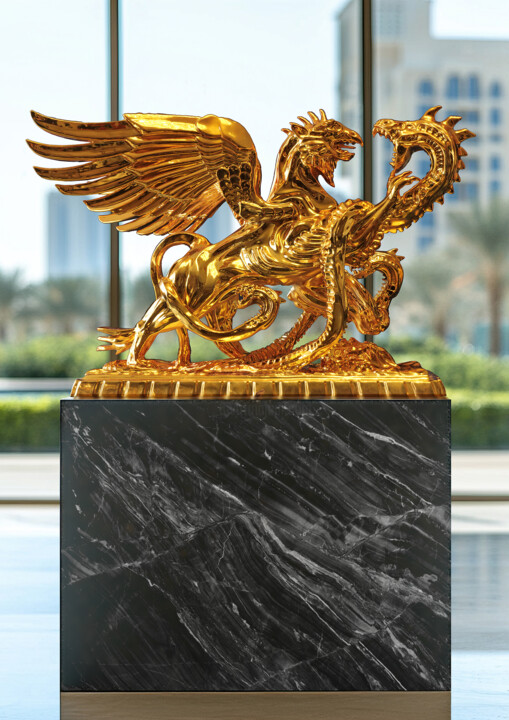
©2024 Krzysztof Plonka
Evolutions of theses works in the contemporary art market
In recent years, original contemporary Spiritual Art artworks have undergone a significant evolution, both in their techniques and themes. Many artists have shifted their focus from traditional religious iconography to explore more personal and abstract concepts of spirituality. These artworks often incorporate diverse mediums, including painting, sculpture, and mixed media, and explore spirituality through a range of cultural, historical, and philosophical lenses. These works have great importance in the contemporary art market, as they offer unique and thought-provoking perspectives on spirituality that resonate with a wide audience.
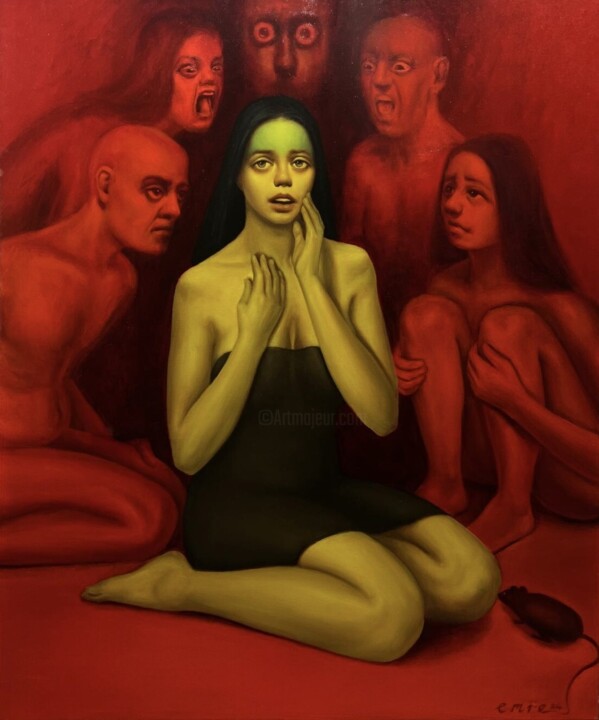
©2024 Emre Acar
Related Famous Artists
Contemporary Spiritual Art is a genre that has evolved over time, and there are many artists who have contributed to its growth. Here are some notable names in the field:
Alex Grey: Known for his intricate and detailed paintings that explore the intersection of spirituality, science, and consciousness. Grey’s work often features human figures, anatomy, and otherworldly landscapes.
Marina Abramović: A performance artist whose work often explores the limits of the human body and mind. Abramović’s work can be deeply spiritual, with pieces that involve meditation, ritual, and transformation.
James Turrell: A sculptor and installation artist who creates immersive environments that play with light and perception. Turrell’s work often involves creating spaces that encourage contemplation and introspection.
Bill Viola: A video artist whose work explores themes of spirituality, consciousness, and mortality. Viola’s videos often feature slow-motion images of people experiencing intense emotions or undergoing transformative experiences.
Yayoi Kusama: A Japanese artist who creates installations that immerse the viewer in a world of color, pattern, and repetition. Kusama’s work often has a meditative quality, inviting viewers to lose themselves in the experience.
These artists all bring a unique perspective to the genre of Contemporary Spiritual Art, and their work reflects a deep engagement with questions of spirituality, consciousness, and the human experience. Whether through painting, sculpture, performance, or video, these artists create works that inspire wonder, contemplation, and awe.

©2025 Ciro Ayala (KIR)
Notable original contemporary Spiritual Art artworks
"Stations of the Cross" by George Tooker, created in 1984, depicts the traditional Catholic practice of the fourteen stations, but in a modern, abstract way. The figures are faceless, representing all of humanity, and the colors are muted, creating a somber atmosphere.
"Angel" by Bill Viola, created in 2001, is a video installation that shows a figure falling through water, then rising again, symbolizing the cycle of life and death. The figure is illuminated, giving it an otherworldly quality, and the slow motion adds to the dreamlike effect.
"Ecstasy" by Anish Kapoor, created in 1992, is a large, shiny red sculpture that seems to glow from within. The shape is suggestive of a human form, but abstract enough to allow for multiple interpretations. The overall effect is both sensual and spiritual.
"The Gates" by Christo and Jeanne-Claude, created in 2005, was a temporary installation in New York City’s Central Park that consisted of thousands of bright orange fabric panels hung from metal frames. The effect was both playful and majestic, and the way that the panels moved in the wind gave the impression of a spiritual dance.
"Untitled (Holy Bible)" by Felix Gonzalez-Torres, created in 1990, is a stack of paper that visitors are encouraged to take and read. The papers have biblical text printed on them, but the fact that they are free to take and use as they wish subverts the traditional authority of the church. The piece invites viewers to create their own relationship with religious texts.
"The Great Wave off Kanagawa" by Katsushika Hokusai, created in the early 1800s, is a woodblock print that depicts a massive wave about to crash down on a boat. The wave is both awe-inspiring and terrifying, and has become a symbol of the natural world’s power and unpredictability. The image has been used in countless spiritual and philosophical contexts.
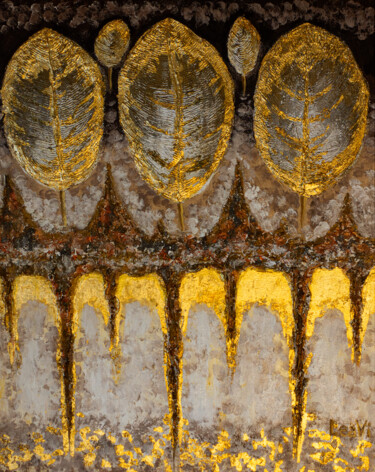
Léa Vi
Acrylic on Canvas | 31.5x23.6 in

Gill Bustamante
Oil on Aluminium | 47x71 in
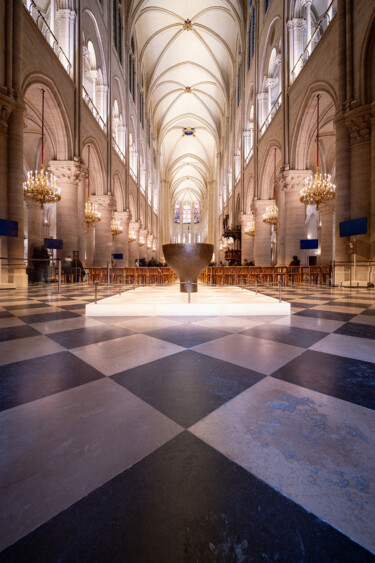
Cédric Brion
Photography | 47.2x31.5 in

Krzysztof Plonka
Sculpture - Bronze | 19.7x28.7 in
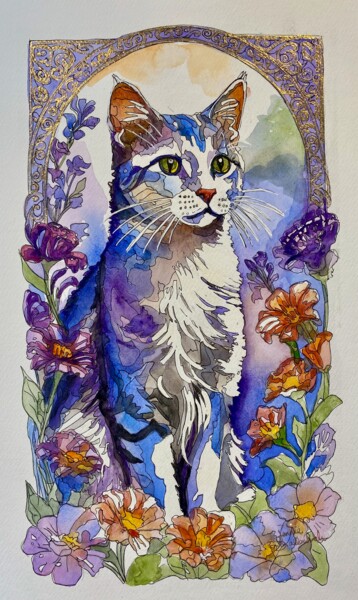
Jennie Smallenbroek
Watercolor on Paper | 19.7x13.8 in

Elsa Marshall-Rothstein
Pencil on Paper | 11.7x8.3 in

Hilary J England
Oil on Canvas | 12x16 in
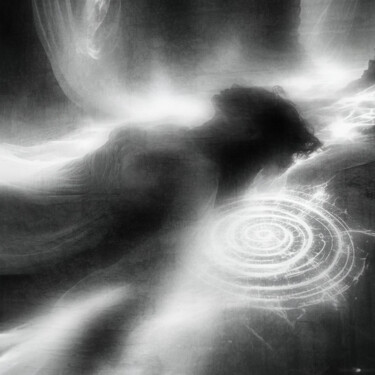
Felipe Hueb
Photography | 35.4x35.4 in

Inessa Lightart
Acrylic on Cardboard | 13.8x19.7 in

Emre Acar
Oil on Canvas | 47.2x39.4 in
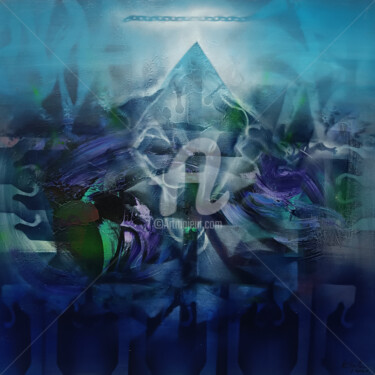
Kloska Ovidiu
Acrylic on Canvas | 31.5x31.5 in
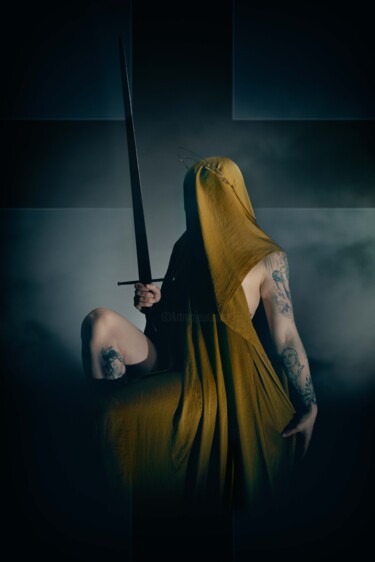
Cédric Brion
Photography | 35.4x23.6 in
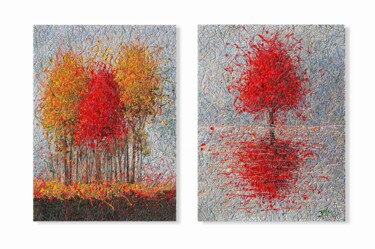
Nadiia Antoniuk
Acrylic on Canvas | 31.5x47.2 in

Svetlana Rumak
Acrylic on Canvas | 31.5x27.6 in






















